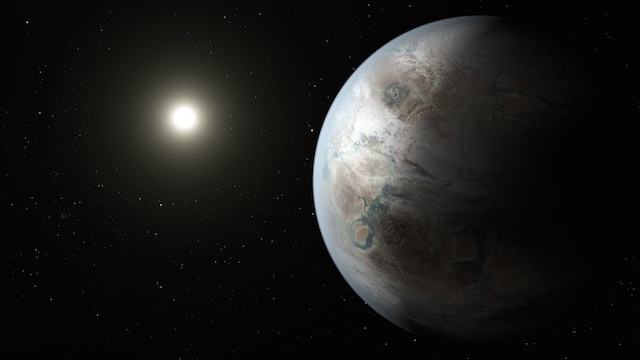Planet hunters at NASA have found what they’re calling Earth’s “older, bigger cousin,” and believe it’s our strongest lead yet to finding advanced life somewhere else in the universe.
The new planet, Kepler 452b, is about 60% bigger than Earth, and orbits a sun similar to our own every 385 days.
That orbit puts it in what scientists call the “Goldilocks zone” — neither too hot, nor too cold, but just right for life.
And since the planet’s star has been around a billion years longer than ours, there’s been more time for life to take root and evolve.
“It’s awe-inspiring to consider that this planet has spent six billion years in the habitable zone of its star, longer than Earth,” Jon Jenkins of NASA’s Ames Research Center said at the announcement Thursday. “That’s substantial opportunity for life to arise, should all the necessary ingredients and conditions for life exist on this planet.”
Why Does This Astronaut Have Two Dogs On His Official NASA Portrait?
Named after the Kepler spacecraft that spotted it, Kepler 452b is the 4,696th planet the space probe has discovered.
Don’t expect to head to Kepler 452b anytime soon: this new world is 1,400 light years away. The fastest spacecraft ever launched from Earth would take 266 million years to get there.
(WATCH the IGN video and READ more at the New York Times) – Illustration: NASA
Help Your Friends And Followers Discover This Story, Share It…




















